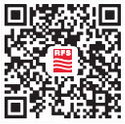Connecting Discovery: Delivering Wireless Coverage in the World’s Biggest Scientific Research Centers
CERN, DESY, ESRF, and Helmholtz Centers GSI and Jülich are the biggest research centers for particle physics and applied science in Europe. Particle accelerators, storage rings, and synchrotrons are built at the limits of technical feasibility and are among the largest and most complicated instruments known to mankind. From the discovery of the Higgs boson in 2012 at CERN’s Large Hadron Collider (LHC) to GSI’s work in nuclear physics, which has paved the way for ion beam cancer therapy, these institutions are at the forefront of scientific discovery.
They are home to hundreds of millions of Euros of research equipment, famously, some of the largest particle accelerators in the world, but how is it connected?
Connecting Scientific Equipment
It is easy to take for granted the idea that just because the equipment is generating billions of valuable data points, there is connectivity.
In reality, particle accelerators and ring structures have several significant challenges that make installing the connectivity required for both research and safety complex.
Firstly, their location in tunnel-like underground environments with a large amount of metal, pipes, cables, bending magnets, cooling, ultra-high vacuum equipment, beam diagnostics, etc, is incredibly ‘wireless unfriendly’. Each of these components alone blocks and impacts the performance of wireless connectivity. Add to this that as some of the largest of their kind, the particle accelerators at research centers in Europe are significant in size, and it is clear that designing and installing a communication system to work around these factors is challenging.
In addition to connectivity to support scientific research, these sites also need mission-critical networks to ensure the safety of those working with the equipment. This requires complete coverage of every square meter of the particle accelerator site from inside the ring itself to all interconnecting tunnels, still overcoming the same ‘wireless unfriendly’ obstacles. So how do we approach it?
Mini Case Study: One of the biggest particle accelerators in Europe
Overview
RFS has worked with scientific research centers in Europe for more than two decades to deliver mission-critical communications equipment. When delivering connectivity for the particle accelerator, every challenge we discussed needed to be overcome: tunnel size, location, ‘wireless unfriendly’ materials, radiation, and access tunnels that also needed coverage to ensure safety.
Solution
The challenging nature of the deployment meant that a system using repeater antennas would not be suitable. A combination of the difficulties in achieving complete coverage with this approach and the radiation levels near the particle accelerators meant a different solution was needed. RFS has tackled the problem efficiently and effectively using its RADIAFLEX radiating cable.
Contoured coverage
RADIAFLEX functions as a distributed antenna spanning the entire deployment. Slots in the copper outer conductor allow a controlled portion of the internal RF energy to be radiated in a consistent way across the entire environment. It overcomes the challenges of an installation deep underground and delivers the connectivity needed to maintain constant coverage within and around the equipment.
RF Cables for RF and data signal connectivity
For the RF cavities and RF (data signal) cable connectivity between beam diagnostics and the mission control room, RFS supplied high-power low-loss air-dielectric HELIFLEX cable as well as highly flexible low-loss foam dielectric CELLFLEX cable and their phase stabilized variants, to help the institution achieve the connectivity needed to operate.
Fire-safety
Fire safety was another significant concern for the project. RFS was able to address this with its robust approach to fire-safe solutions meeting the highest European safety standards (CPR class B2ca s1a d0 a1). This means the solution will maintain performance in extreme heat, and the cable will not drip in the event of a fire to ensure continuous connectivity with no compromise on safety.
Premium connectors
The connectors supplied were also a key consideration of the deployment. RFS used premium quality, Teflon-free connectors for two reasons. Firstly, to ensure low loss and consistent performance from the cable. Secondly, the site needed equipment that would not affect the results of testing taking place. Teflon is a common material in standard connectors that would impact readings; RFS was able to provide Teflon-free connectors that met the deployment requirements.
Result
RFS has worked with this institution for more than two decades, supplying and maintaining the mission-critical infrastructure on its testing sites. RFS has been able to deliver not only from an equipment perspective but also as a consultant to ensure the connectivity that is needed from both a safety and operations perspective.
Conclusion
Delivering reliable, quality connectivity in the complex environments of scientific research centers is no small feat. Network infrastructure must be designed to overcome the challenges of wireless-unfriendly conditions. Although there are other ways to flood a space with connectivity, a cable-based approach that makes use of top-tier RF cables such as RADIAFLEX, HELIFLEX, and CELLFLEX allows research centers to deliver reliability, performance, and low interference without spiraling costs or compromise. With the right communications infrastructure in place, these institutions can focus on pushing the boundaries of science without being hampered by temperamental or inadequate connectivity.
For more information on how RFS is working with scientific research centers and customers in other verticals to deliver best-in-class communications infrastructure, get in touch.


